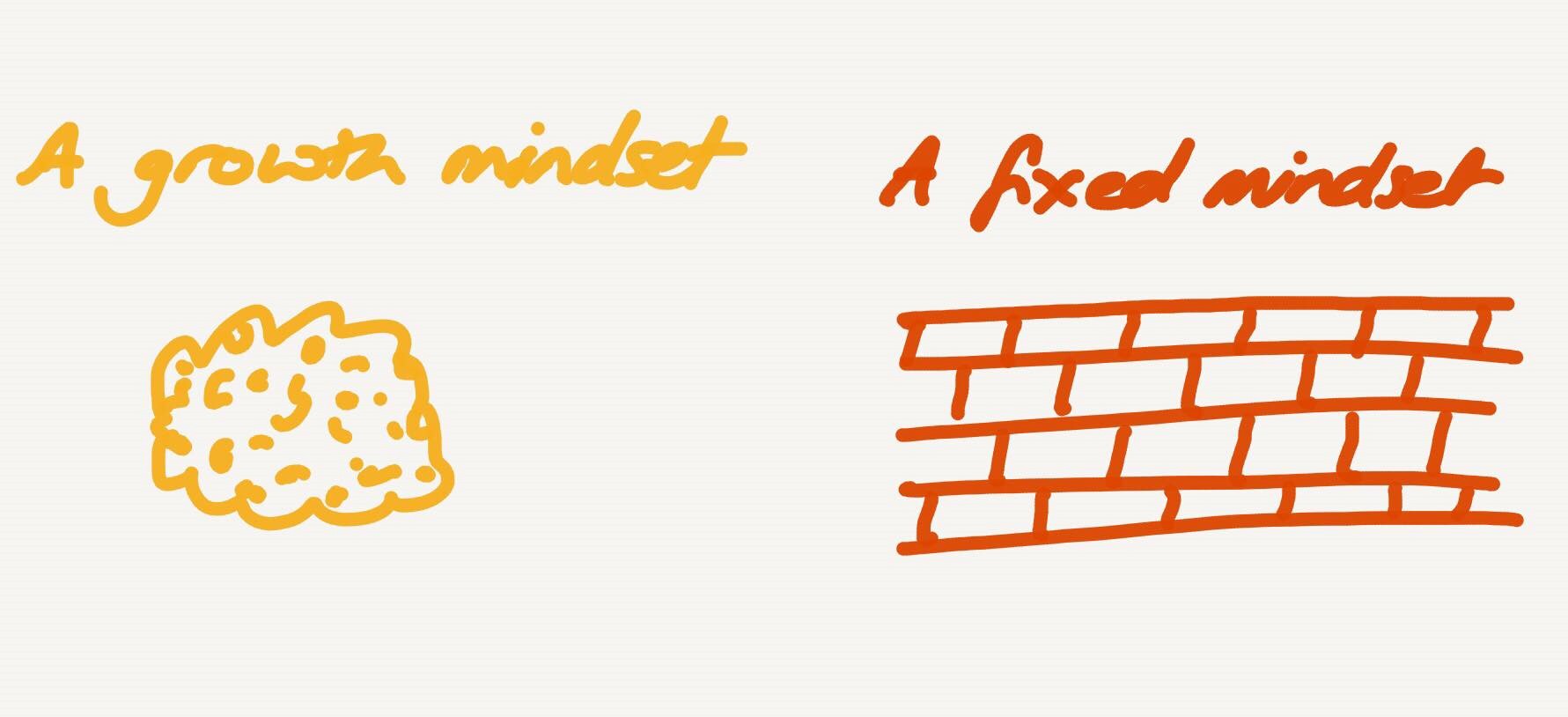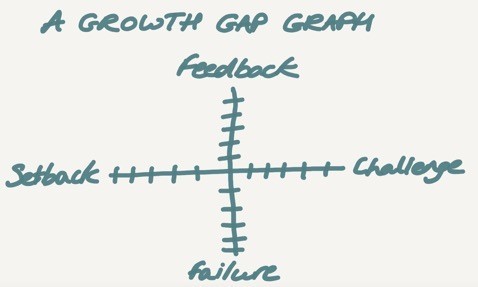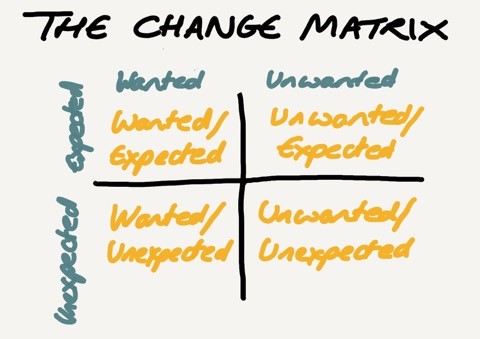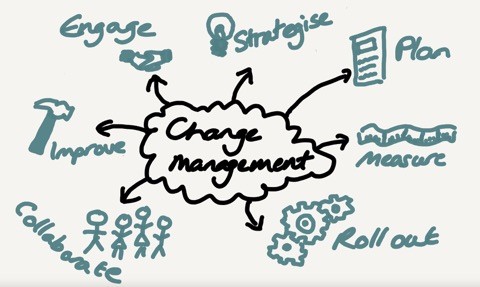All About Change
Kirsten Holt, the Head of Pavilion ELT, discusses the different components of CHANGE.

Change comes in many shapes and forms for teachers, trainers and people in publishing – the changes can vary from the mundane through to life changing experiences. Take for example, the changing community of students you face each week if you work in a continuous enrolment school environment, or on a new course or the decision to change a coursebook, or perhaps even your teaching style. In publishing, a change might come from developing material for a new, possibly unfamiliar, context, or in more recent years, when the company decides to transform leading to team changes, even potential redundancy, or simply new ways of working. Outside the classroom or publishing environment we constantly face change – through politics, by becoming more environmentally focussed … right down to the programmes we watch, the way we receive our news and even the type of bread we can get in the supermarket.
‘It’s only after you’ve stepped outside your comfort zone that you begin to change, grow, and transform.’
(Roy T. Bennett)
How we react to change is the telling factor, and interestingly, this can vary depending on how you are feeling when the change rolls in, what the context is and indeed what the impact on you the change will have. There has been a lot of talk in recent years about having a growth mindset versus a fixed mindset but more recently it has emerged that you may not be one type of mindset all of the time and in different contexts.
But what is a growth mindset? And do you have it at the moment? To find out what it is, try to spend a few minutes watching this short infographic video from Amazing If.

In summary, a growth mindset can be viewed as you being like a sponge where you are hungry for knowledge and want to learn – just as a sponge soaks up water (a learn-it-all if you will) and a fixed mindset is when you are acting like a brick wall with the wall being the knowledge you possess and being a blocker to learning anything more (a know-it-all perhaps).
To help define whether you have a growth or fixed mindset on a particular period of change, issue or an opportunity of learning, it is worth using a 5-point growth gap graph (see below). For feedback, it is how willing you are to learn from others and to hear different viewpoints. For failure, it is about how you admit or recognise mistakes or events you can learn from. The challenge line is the scale of the problem you are trying to solve or learn about – if yours is off the scale (1 being closest to the centre, 5 being the furthest away) then you might want to break it down into a series of smaller challenges and tackle them one at a time. The setback line refers to resilience to learn or problem solve. If you answer honestly and score 5 for each one, you would be extremely unusual – in other words your growth gap graph should be a jagged profile.

‘Change is inevitable. Growth is optional.’
(John Maxwell)
So, what CHANGES do I think we need to consider?
C is for Collaboration
Start to work collaboratively: just as our students don’t learn in a vacuum – they are surrounded by their co-students, their teacher and so on – we should develop areas where we can share ideas, bounce concepts off each other, test out new ideas, etc. The staffroom used to be the best place for such collaboration but nowadays you can find Communities of Practice online and social media groups where people can get together and discuss common goals, shared topics and look at how to problem solve certain issues.
‘It has been said that teachers who have been teaching for twenty years may be divided into two categories: those with twenty years’ experience and those with one year’s experience repeated twenty times.’
(Penny Ur)
Imagine the power of getting groups of teachers with their twenty years’ experience and getting them to work together. One such example is the Facebook group ELT footprint group (and its related blog) which has a whole community of teachers looking at ways they can respond to the climate emergency we are facing and to lessen their school’s environmental footprint.

H is for Habit changing
Become habit changing: Are all your students the same as they were a few years ago? Do they want to learn in the same way? Does your material need to be adapted or personalised in any way?
‘Courage is the power to let go of the familiar.’
(Raymond Lindquist)
I’ll never forget working in a school where one teacher used to insist on having the same classroom week after week where he kept special boxes labelled by level. Whenever he got, say, an intermediate class the box would come down, the material it contained would come out and he would teach the same lesson irrespective of whether he had a group of Swedish teenagers studying for 2 weeks or a Korean group of young adults hoping to go on to do further education in English, enrolled on a 9-month course. This lack of ability to change would no doubt have impacted his students’ learning.
Or take the argument of whether to use mobile phones or not in the classroom. Of course, if students are taking the opportunity to catch up on their social media then perhaps there should be temporary ban; however, don’t assume that all students will be doing this. I was at a technology conference a few years ago where a session was made up of students from a very young age through to university students each taking it in turns to talk about how they were using their phones in class – some were using them to check spellings and/or save reference notes to look up later; some were recording their teachers’ feedback so they wouldn’t forget it; others were making notes of their screen shots of the board to help them revise later and so on. As technology becomes more advanced, phones could be used to bring the outside world into the classroom with very little resources required – Google Earth is free to use, for example, and in no time you could be virtually touring the Taj Mahal and describing what you are seeing to a partner. (For more on this, revisit Pete Sharma’s latest article in English Teaching Professional - ‘Get real (or not)! Virtual reality in ELT’).
Check in with your class(es) and find out which ways they enjoy learning, how they might like to use their phones in class (or decide not to) and try different levels of student autonomy in class to see whether a change in learning habits positively impacts learning.
A is for adapting
Having adapted to new habits, don’t forget to review, reflect and adapt your pratice over time. Obviously the first thing to do is actually getting feedback from your students, and then perhaps from your mentor if you have one or your line manager, but then to be outward looking. I have found conferences have helped with this as you can check in and see what teaching method is getting the most traction, hear different ways people approach the same situation, and learn about the changing needs of your students. However, if a conference isn’t for you because of its location, its cost or even the amount of time it takes up, you can get this learning through the Communities of Practice mentioned above, from online webinars (often available for free) and from reading magazines such as English Teaching Professional or Modern English Teacher. In other words, there is no excuse not to adapt over time!
‘Those who cannot change their minds cannot change anything.’
(George Bernard Shaw)
N is for negotiations
Whatever change you decide to do, don’t necessarily jump in with both feet! Sometimes change has to be brought in gradually. Or it needs to be negotiated. Be clear as to why you are planning to make the change and what benefits it might bring but also understand how the change might impact others, and how they might feel when you start to bring in the change (see the mindsets above).
For example, many of your students might be used to learning grammar in class and getting their homework at the end of the lesson, which is often extra language practice. Perhaps you want to turn things on their head by using flipped learning to teach students the grammar ahead of class, then use the classroom time to use the language in authentic conversations and/or situations with you acting as a communication coach rather than a traditional teacher. If you wanted to switch overnight your students may soon start forming a line outside the school manager’s office because they don’t understand the change, feel they aren’t learning and so on. However, were you to negotiate the change with the students (or one class rather than all your classes), trial it over a set period of say a couple of weeks, and ask them for feedback, you may find they are more onboard with the new way of learning. Also by starting on a small scale, you will have evidence to add to your ‘case’ to roll out your change on a larger scale.
Whatever the change you want to try is, identify where the change you want to bring in sits on the change matrix (see below) and assess what you need to do in terms of negotiation to minimise negative reactions. This will help your negotiations.

‘One child, one teacher, one book, one pen can change the world.’
(Malala Yousafzai)
G is for growth
Once you have negotiated your change and implemented it, to ensure true growth it is worth using a change management framework:

To check you have covered all bases:
- Are you clear about why you need the change and what the change’s benefits are?
- Have you engaged all the stakeholders, e.g. the students, your line manager/school owner, the parents, etc?
- Have you completed a plan as to how you are going to make the change?
- Do you have a form of measurement in place so that you can assess whether the change is working, whether it is getting the rests you hoped for and how long it took to implement?
- Have you rolled out the change (yet)?
- Have you involved others and if so, do you need their feedback?
- What do you need to improve? And how will you make these improvements?
Having the answers recorded will help you if you want to roll the change out wider or to build upon it in future. Of course, I should say that the change management framework is more useful when you are implementing larger scale changes, for instance bringing in flipped learning; making the school more environmentally friendly and reducing its footprint and so on.
‘Change is inevitable. Growth is optional.’
(John Maxwell)
E is for engagement
What’s in it for me? This is a question that should be asked not just for yourself but those who are affected by the change. Getting everyone involved can enrichen the change you want to implement. For instance, if you are trying to make the school more environmentally friendly other teachers, students and even their parents, partners (and dare I say publishers) might have ideas, processes or products that could improve the change or make it more effective and/or long lasting. Someone may have seen or heard something that is being done in another industry that could help your own perhaps. By getting people involved they are more invested in the change and therefore will be more willing to see it brought in.
‘Truly amazing, what people can get used to, as long as there are a few compensations.’
(Margaret Atwood)
S is for success solutions
With all changes the ultimate goal is success. You want the change to succeed and bring results otherwise what was the point?

Our last ETp blogger, Chia Suan Chong said that she blogged to “continue to learn, to reflect, to change and to develop. I’m a curious person and am not adverse to change, and I hope this keeps things fresh.” Having been able to blog on different topics every other week since 2012, I’d say she managed to do this pretty successfully! It was great to catch up with her the other day to see how she is growing and building upon the success of her blog by presenting in other fields than ELT, being involved in more ambitious writing projects and a lot more besides.
I’m hoping that in time our new wave of bloggers, and yes vloggers, will have equal success and you will enjoy reading and watching what they have to say. Stay tuned to find out who they are and what they will be talking about in the next few weeks. In the meantime, please let us know what some of the changes you are facing and what successes you have had in the comments box below.


Comments
Write a Comment
Comment Submitted